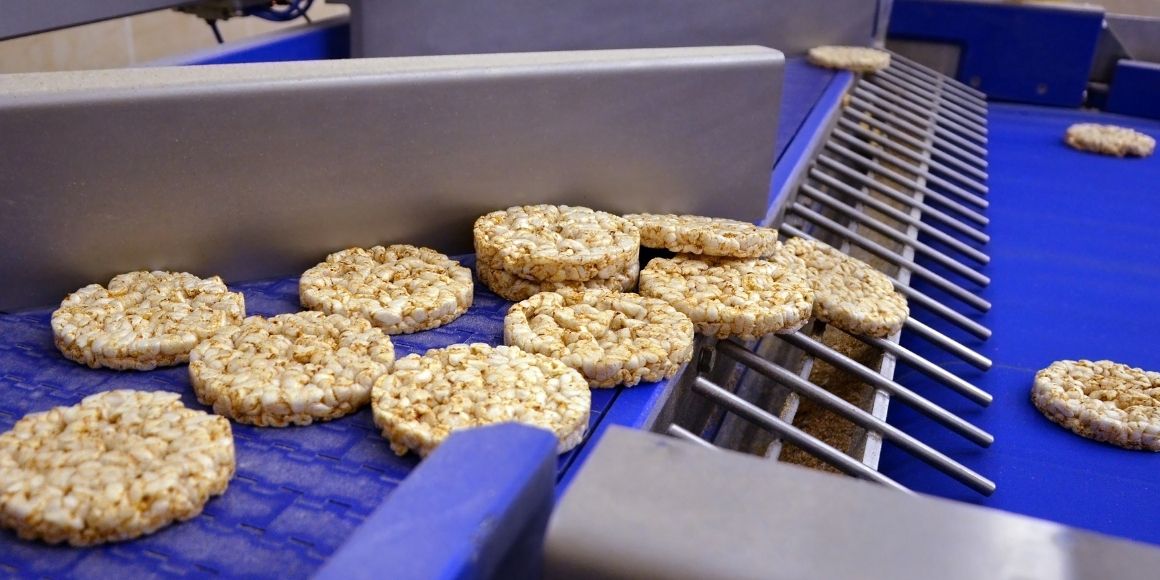In the manufacturing industry, downtime is the greatest enemy of productivity. Any time a machine, assembly line, or even an entire facility should be producing product but is not because of some sort of problem, businesses lose critical revenue. When downtime occurs in a specific area, that area’s productivity drops to zero.
Because of the lack of production during downtime, it can be very costly to companies, particularly in the food processing industry. Especially when downtime events are unexpected, costs often remain the same while no revenue is being generated, leading to decreased profits. Food manufacturers encounter additional problems when food products spoil on the line during lengthy downtime events.
For the aforementioned reasons, efforts to decrease downtime are a top priority for food manufacturers. The possibility of profit margins being reduced when they are already as small as they are in the food manufacturing industry is unacceptable, so any ways to increase profits will increase the health and stability of a company over time. That’s why being able to efficiently monitor and reduce downtime is so critical to companies that compete on thin margins, such as food manufacturers.
Tactics to Reduce Downtime
There are many tactics through which downtime can be reduced, but many of them can be grouped into two main categories: machine maintenance and employee focus.
Provide Maintenance Training
If possible, training employees in basic machine maintenance for their station can eliminate short downtime events. If employees are trained to repair or rectify simple problems with their machines or to perform simple routine maintenance such as cleaning and lubrication, they will be able to contribute to a reduction in downtime events. This can save large amounts of time because small problems or stoppages won’t require a specialist to come in to fix machines as often.
Create Preventative Maintenance Plans and Schedules
Preventative maintenance can be difficult for manufacturing companies to practice regularly, because it often will cause downtime itself. However, downtime caused by preventative maintenance on machines is almost always shorter and cheaper than the corresponding repairs needed on a machine, making preventative maintenance a far more desirable option. Even so, the downtime caused is often enough of a hassle for companies to push it off as long as possible, sometimes resulting in the malfunction that could have been avoided with preventative maintenance.
Setting a hard date and routine for when preventative maintenance will occur makes it more likely that a company will stick to that date, whether it is weekly, monthly, or yearly maintenance. A firm schedule will also allow a company to prepare machines for maintenance by cleaning the surrounding workstations before scheduled maintenance, allowing for shorter maintenance times.
Conduct Cross-Training
In addition to training employees in machine maintenance, training employees on machines other than those at their usual stations will allow them to work elsewhere in the event of downtime on their machine. If employees are trained to work in more areas than their normal station, when a downtime occurs in one area of the facility, employees from that area can make themselves useful by increasing productivity elsewhere in the facility.
Although cross-training may not directly contribute to efforts to reduce downtime, ensuring paid employees can work in any situation can help to offset some of the negative effects of downtime. Cross-trained employees may also know how to fix machines other than their own, allowing them to assist with repairs on another machine when downtime occurs and thereby contribute to downtime reduction.
Seek Employee Input
One of the quickest and easiest ways to start taking steps toward decreasing downtime is to ask for employee input. However, it can be difficult to discern which of the issues that they point out is the most important to focus on. Also, although employees working with machines or processes know the area better than anyone, any anecdotal evidence is subjective in nature.
Employees may be hesitant to report downtimes during their shift because they may feel that it doesn’t paint them in the best light. That’s why implementing a system like Worximity TileBoard—which gathers actual machine-based data that is not only more accurate but also irrefutable—can be an important step to round out what you can learn from employees.
It can be useful to set aside time to either individually interview employees or simply create an avenue for employee input and improvement suggestions. Machine operators know their workstations better than anyone else, and they will likely have valuable input for how to begin decreasing downtime at their station—but you might also begin to introduce the topic of Smart Factory analytics and position it in a way that’s non-threatening.
Set Specific Production Goals
Establishing specific production goals for each month is an easy way to decrease downtime by increasing motivation. A clear, tangible goal for production output is far more motivational to employees than a vague directive to produce “as much as possible” over a month’s time. Setting goals is a quick and easy task that simply requires a company to evaluate past output levels on which to base a new goal, and it can lead to higher motivation and less wasted time.
With production goals in place, you can prioritize initiatives that will most quickly and effectively help you to reach those goals. Having a tool like Worximity TileBoard in place can help you establish benchmarks for machine, line, or facility KPIs. You can then build a model of the system and make decisions about which initiatives you can implement first.
Production Monitoring Is the Surest Step to Take To Reduce Downtime
When it comes to identifying when and where downtime is occurring or is most likely to occur, real-time production monitoring tools like Worximity TileBoard give invaluable insight. Production monitoring is proven in food manufacturing to significantly reduce downtime. When production is monitored and metrics are displayed live for managers and employees, identifying downtime events is as simple as identifying where throughput is dropping. All downtime events can be automatically identified by production monitoring software, allowing employees to respond instantly and try to fix the problem causing the downtime event.
Additionally, production monitoring software can save data over time, allowing managers to identify when production metrics are suffering over a long period of time. Comparing present and past metrics can identify where maintenance is needed and highlight where inefficiencies are present.
Each downtime event can be labeled with all relevant information, such as:
- Downtime length
- Location
- Shift
- Line or machine
- Product in production
This information can show patterns of recurring downtime under certain circumstances and highlight larger problems within certain areas of the facility.
Increasing Productivity by Reducing Downtime
Any tactic that reduces downtime will automatically increase productivity. If downtime is less frequent, more production time is used, leading to higher productivity over time. Even without downtime events occurring, manufacturers can identify problems in production by using tools such as production monitoring.
Decreased production speed or throughput can sometimes indicate on their own where problems are occurring in a facility. These areas can be optimized to increase productivity, via maintenance or part replacement. Most continuous improvement practices can also be used to increase productivity and efficiency, leading to higher output and profits for manufacturing companies.
To reduce downtime events and increase productivity, it is vital to prioritize preventing machine breakdowns and involving employees in the improvement process. Prevent problems before they occur—which is always cheaper and faster than fixing a problem—and invest in employees by increasing their capabilities. If manufacturers adhere to these guidelines, downtime events will decrease in length and frequency, increasing productivity and profits in their food manufacturing facilities.
To begin your journey to reduce downtime in your operations, take advantage of our Smart Factory Analytics e-book! You’ll be on your way to achieving the results that others have achieved by implementing the Worximity TileBoard solution.







